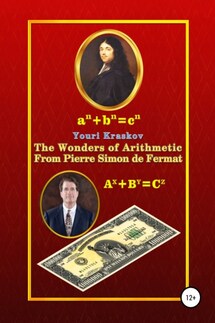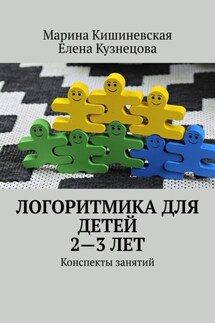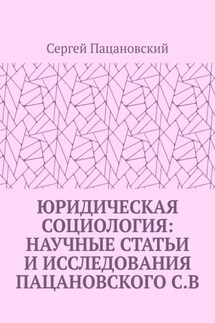The Wonders of Arithmetic from Pierre Simon de Fermat - страница 44
с = x+y = p>3+q>3= z>3; x = p>3; y = q>3 (3)
Then equation (1) must have the form:
(z>3)>3 = (z>2)>3(p>3+q>3) (4)
Thus, we found that if there are numbers a, b, and c that satisfy equation (1), then there must be numbers p p>3+q>3= z>3 If we now apply the same approach to solving this equation, that we applied to solving equation (1), we will get the same equation, only with smaller numbers. However, since it is impossible to infinitely reduce natural numbers, it follows that equation (1) has no solutions in integers. At first glance, we have received a very simple and quite convincing proof of the Fermat problem by the descent method, which no one has been able to obtain in such a simple way for 385 years, and we can only be happy about it. However, such a conclusion would be too hasty, since this proof is actually incorrect and can be refuted in the most unexpected way. However, this refutation is so surprising that we will not disclose it here, because it opens the way not only for the simplest proof of the FLT, but also automatically allows to reduce it to a very simple proof of the Beal conjecture. The disclosure the method of refuting this proof would cause a real commotion in the scientific world, therefore we will include this mystery among our riddles (see Appendix V Pt. 41). So, we have demonstrated here solving to Fermat's problems (only by descent method!): 1) The proof of the Basic theorem of arithmetic. 2) The proof of the Fermat's theorem on the unique solving the equation p>3 = q>2 + 2. 3) A way to prove Fermat's Golden Theorem. 4) A Fermat's way to solve the Archimedes-Fermat equation Ax>2 + 1 = y>2. 5) The proof method of impossibility a>3+b>3=c>3 in integers, which opens a way to simplest proofs of the FLT and Beal conjecture. 6) A Fermat's proof his grandiose discovery about primes in the form 4n + 1 = a>2 + b>2 which we have presented in another style in Appendix IV, story Year 1680. Over the past 350 (!!!) years after the publication of these problems by Fermat, whole existing science could not even dream of such a result!
3.5. Parity Method
Before we embarking on the topic "Fermat's Last Theorem" we note that this problem was not solved by Fermat himself using the descent method, otherwise in his FLT formulation there would be no mention of a "truly amazing proof", which certainly related to other methods. Therefore, to the above examples of the application of the descent method we will add our presentation of two methods unknown to today's science. The most curious of these is the parity method.
3.5.1. Defining Parity as a Number
The Basic theorem of arithmetic implies a simple, but very effective idea of defining parity as a number, which is formulated as follows:
The parity of a given number is the quantity of divisions this number by two without a remainder until the result of the division becomes odd.
Let's introduce the parity symbol with angle brackets. Then the expression ‹x› = y will mean:
the parity of the number x is equal to y. For example, the expression "the parity of the number forty is equal to three" can be represented as: ‹40›= 3. From this definition of parity, it follows:
– parity of an odd number is zero.
– parity of zero is infinitely large.
– any natural number n can be represented as n = 2>w (2N – 1)
where N is the base of a natural number, w is its parity.






